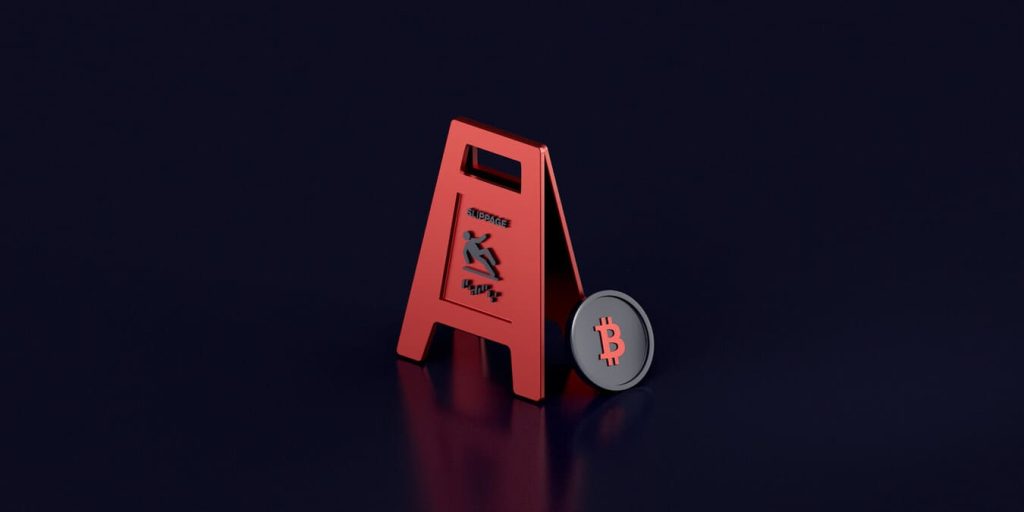
Trượt giá trong giao dịch là gì?
Mục lục
Trượt giá xảy ra khi một giao dịch trên thị trường tài chính - cổ phiếu, tiền tệ, hàng hóa hoặc các loại hình khác - được thực hiện ở mức giá khác với mức giá bạn mong đợi. Trượt giá đơn giản là sự chênh lệch giữa giá bạn mong đợi và giá thực tế của giao dịch. Nếu xảy ra trượt giá, các nhà giao dịch nên tìm hiểu một số kỹ thuật giảm thiểu thua lỗ như lệnh giới hạn và nâng cao kỹ thuật giao dịch bằng cách chọn giờ giao dịch tối ưu.
Lặn sâu vào sự trượt dốc
Trước tiên, chúng ta cần hiểu trượt giá là gì và nó biểu hiện như thế nào trên thị trường tài chính trước khi thực sự đánh giá được ảnh hưởng của nó đến giao dịch. Mặc dù trượt giá xảy ra thường xuyên, nhưng mức độ trượt giá có thể khác nhau tùy thuộc vào thị trường và lệnh được phát hành.
Trượt giá có thể được định nghĩa là chênh lệch giữa giá thực hiện giao dịch và giá mà nhà giao dịch dự kiến thực hiện. Thời điểm thực hiện lệnh là nơi xảy ra biến động. Trong các thị trường biến động nhanh, giá có thể dao động trong khoảng thời gian ngắn này; do đó, giá thực hiện cuối cùng có thể khác với giá ban đầu được thiết lập.
Trượt giá dương là kết quả khi giao dịch đạt được mức giá tốt hơn dự kiến. Điều này tốt cho khoản đầu tư của bạn, nghĩa là bạn chi ít hơn dự kiến khi mua một thứ gì đó hoặc kiếm được nhiều hơn dự kiến khi bán một thứ gì đó.
Trượt giá âm là kết quả của một giao dịch được thực hiện ở mức giá thấp hơn mong muốn. Khi điều này xảy ra, bạn sẽ nhận được ít hơn dự kiến khi bán một thứ gì đó hoặc chi tiêu nhiều hơn dự kiến khi mua một thứ gì đó. Điều này có thể làm giảm lợi nhuận giao dịch của bạn.
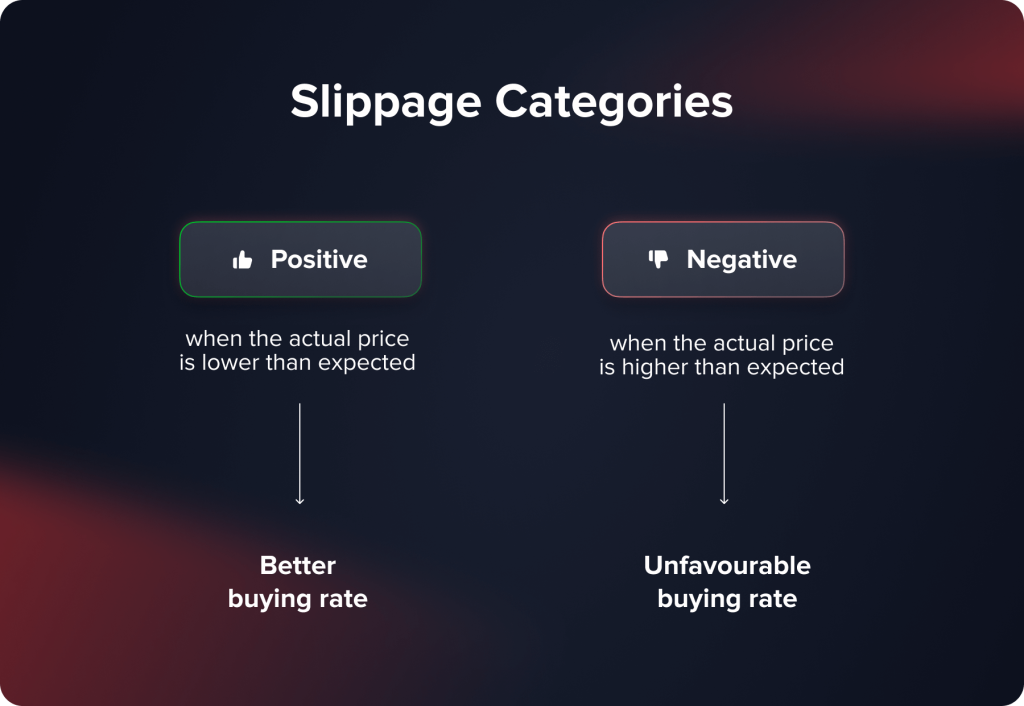
Trượt giá trong thị trường biến động
Biến động và trượt giá là hai yếu tố không thể tách rời. Biến động giá trở nên rõ ràng hơn khi biến động thị trường tăng lên. Điều này có thể bị ảnh hưởng bởi phản ứng của thị trường đối với dữ liệu kinh tế, các sự kiện toàn cầu hoặc những biến động cảm xúc. Sự biến động nhanh chóng của giá cả hàng hóa do điều này gây ra khiến trượt giá ngày càng có khả năng xảy ra và nghiêm trọng hơn. Trong một số trường hợp, giá thực hiện có thể khác biệt đáng kể so với kỳ vọng của nhà giao dịch, gây khó khăn cho việc mở hoặc thoát lệnh.
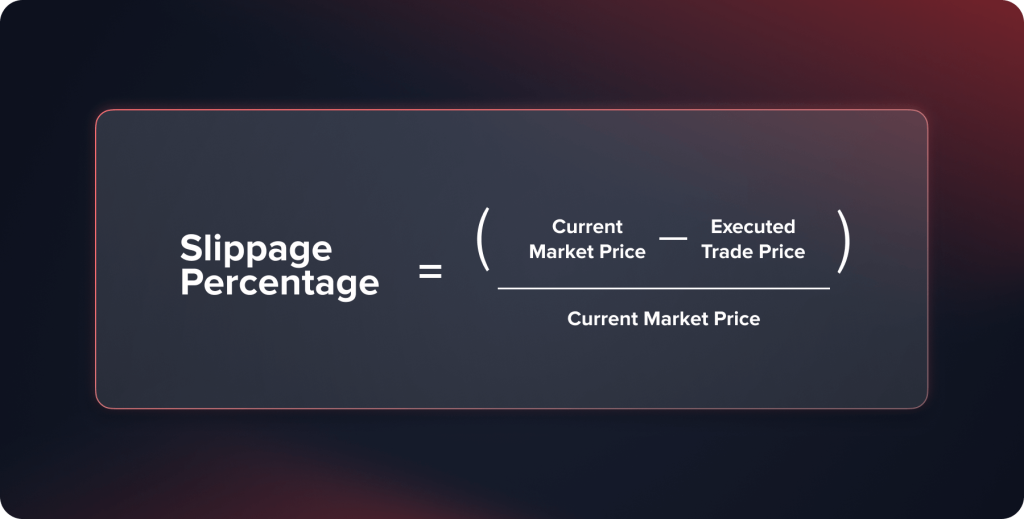
Bản chất biến động của giá cũng góp phần làm tăng trượt giá. Thị trường là môi trường năng động, trong đó nhiều biến số liên tục tác động đến giá tài sản. Tính thanh khoản này ngụ ý rằng trượt giá luôn có thể xảy ra, ngay cả trong những tình huống ít biến động, vì giá thị trường tại thời điểm thực hiện lệnh có thể khác với giá mà nhà giao dịch nhìn thấy khi đặt lệnh.
Trượt giá là một phần bình thường của giao dịch, có thể mang lại rủi ro và cơ hội. Các nhà giao dịch cần hiểu rõ cách thức hoạt động của nó vì nó ảnh hưởng đến quyết định của họ và hiệu quả của phương pháp giao dịch nói chung. Bây giờ, hãy cùng xem xét nguyên nhân gây ra trượt giá và cách người mua có thể ứng phó với nó trong các tình huống thị trường khác nhau.
Nguyên nhân gây trượt
Việc hiểu rõ nguyên nhân gây ra trượt giá rất quan trọng đối với các nhà giao dịch vì nó cho phép họ tìm ra các chiến lược để giảm thiểu hoặc hạn chế hậu quả của nó. Có nhiều yếu tố có thể dẫn đến trượt giá; mỗi yếu tố sẽ ảnh hưởng đến giá cuối cùng của một giao dịch theo một cách riêng.
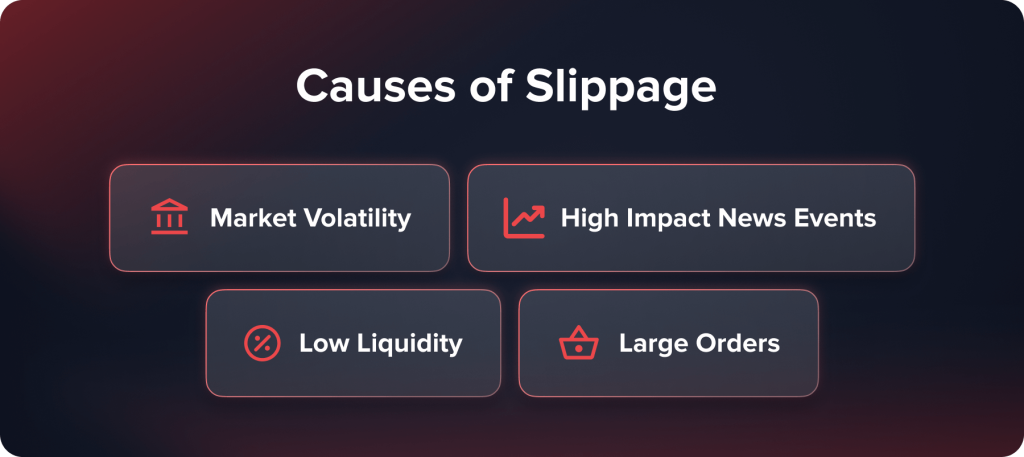
Biến động thị trường
Điều này đề cập đến mức độ và tần suất biến động giá trên thị trường tài chính. Trong các thị trường biến động mạnh, giá có thể thay đổi mạnh mẽ và nhanh chóng trong thời gian ngắn. Nguyên nhân chính gây ra sự trượt giá nghiêm trọng là sự biến động nhanh chóng này. Ví dụ, giá của một cặp cổ phiếu hoặc tiền tệ có thể thay đổi rất nhiều giữa thời điểm lệnh giao dịch được phát hành và thời điểm thực hiện trong thời gian biến động, do đó tạo ra sự chênh lệch đáng kể giữa giá dự kiến và giá thực hiện.
Sự kiện tin tức có tác động lớn
Thị trường có thể phản ứng nhanh chóng và mạnh mẽ với các sự kiện tác động đáng kể đến nó, chẳng hạn như công bố số liệu thống kê kinh tế, tin tức chính trị hoặc báo cáo thu nhập của công ty. Do thị trường phản ứng và điều chỉnh theo thông tin mới, các nhà giao dịch thường chịu lỗ trong những giai đoạn này. Ví dụ, giá trị của một loại tiền tệ có thể tăng vọt nếu một báo cáo kinh tế quan trọng cho thấy tình hình kinh tế thực tế mạnh hơn dự kiến. Điều này có thể ảnh hưởng đến các lệnh giao dịch ngoại hối đang được thực hiện.
Thanh khoản thấp
Khả năng mua và bán tài sản có thể giao dịch được nhanh chóng và dễ dàng mà không làm thay đổi đáng kể giá được gọi là thanh khoản. Việc hạn chế người tham gia thị trường có thể gây khó khăn cho việc xử lý các lệnh lớn mà không ảnh hưởng đến giá của tài sản hoặc thị trường không có tính thanh khoản cao. Trượt giá xảy ra khi một lệnh giao dịch được đặt nhưng giá thực hiện dự kiến không tạo ra đủ lực mua hoặc bán, dẫn đến giao dịch được hoàn tất ở một mức giá khác. Ví dụ, trong một thị trường chứng khoán ít giao dịch, ngay cả một lệnh khá khiêm tốn cũng có thể ảnh hưởng lớn đến giá.
Đơn hàng lớn
Khối lượng lệnh cũng có thể ảnh hưởng đến khả năng và mức độ trượt giá. Các lệnh lớn, đặc biệt là trên các thị trường có thanh khoản hạn chế, có thể chiếm hết tất cả các lệnh có sẵn ở mức giá mà nhà giao dịch mong muốn, do đó lệnh được hoàn tất ở một mức giá khác. Ví dụ, trượt giá có thể xảy ra nếu nhà giao dịch đặt lệnh mua lớn trên một thị trường không có đủ lực bán ở mức giá hiện tại. Lệnh có thể được đáp ứng ở mức giá cao hơn. Hiệu ứng này dễ thấy hơn ở các thị trường mà các lệnh lớn chiếm phần lớn trong dòng giao dịch thông thường.
Việc nhận biết mối quan hệ giữa biến động thị trường, sự kiện tin tức, thanh khoản và quy mô lệnh là rất quan trọng để đưa ra các giải pháp hiệu quả nhằm ứng phó với hiện tượng này. Với nền tảng này, chúng tôi sẽ nghiên cứu các tác động khác nhau của trượt giá trên các thị trường khác nhau, cung cấp thông tin chi tiết về cách các nhà giao dịch trong các hoàn cảnh khác nhau nhận thức và phản ứng với trượt giá.
Trượt giá ở các thị trường khác nhau
Mặc dù là một khía cạnh tự nhiên của giao dịch, trượt giá biểu hiện khác nhau ở mỗi thị trường vì mỗi thị trường vận hành và hành vi khác nhau. Trong những giai đoạn biến động mạnh và có nhiều sự kiện tin tức tài chính quan trọng, trượt giá rất phổ biến trên thị trường chứng khoán. Nó thường ảnh hưởng nhiều nhất đến các cổ phiếu có vốn hóa thị trường nhỏ hoặc tỷ giá giao dịch thấp. Trong trường hợp này, chênh lệch giữa giá dự kiến và giá thực tế có thể trở nên lớn hơn, đặc biệt là khi thị trường mở cửa và đóng cửa.
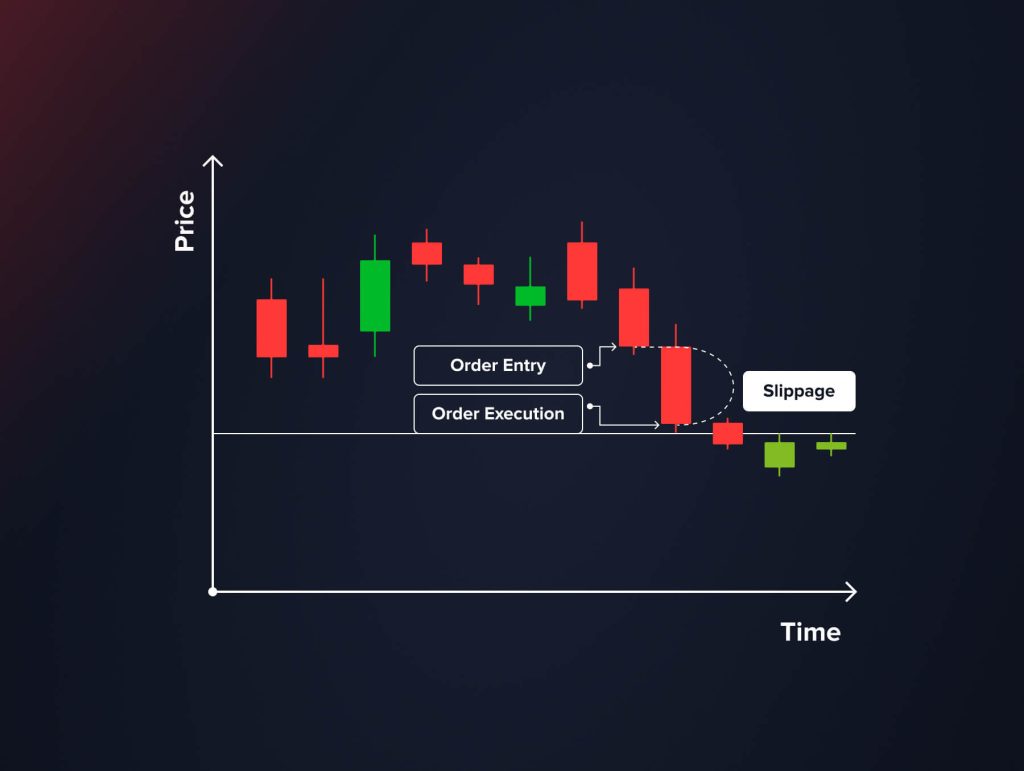
Thị trường ngoại hối (FX) vốn nổi tiếng với tính thanh khoản cao và biến động thấp thường có độ trượt giá thấp hơn. Tuy nhiên, trong các sự kiện kinh tế quan trọng hoặc tin tức được công bố, ngay cả thị trường này cũng có thể chứng kiến giá tăng nhanh, dẫn đến trượt giá. Các nhà giao dịch Forex cần thận trọng hơn trong những giai đoạn này để hạn chế rủi ro biến động giá đột ngột.
Thị trường tiền điện tử thường thiếu thanh khoản và có phần bất ổn. Do đó, giá cả có thể thay đổi đáng kể, đặc biệt là đối với các loại tiền tệ mới hoặc để ứng phó với các sự kiện lớn ảnh hưởng đến ngành công nghiệp tiền điện tử. Vì những thị trường này biến động nhanh chóng, các điểm vào và ra cần được cân nhắc kỹ lưỡng để giảm thiểu rủi ro trượt giá.
Các nhà giao dịch cần biết sự trượt giá diễn ra như thế nào trên các thị trường khác nhau này và nguyên nhân gây ra nó, chẳng hạn như khối lượng thị trường, quy mô lệnh và thời điểm xảy ra sự kiện tin tức, để có thể lập kế hoạch tốt và tránh mất quá nhiều tiền hoặc chi phí tăng lên do giá thay đổi.
Tác động của sự trượt giá đối với các nhà giao dịch
Trượt giá có thể ảnh hưởng lớn đến các nhà giao dịch, làm thay đổi cả kết quả của từng giao dịch riêng lẻ lẫn chiến lược chung mà họ sử dụng. Tác động này có thể biểu hiện theo cả hướng tiêu cực và tích cực, tùy thuộc vào hướng trượt giá và điều kiện thị trường.
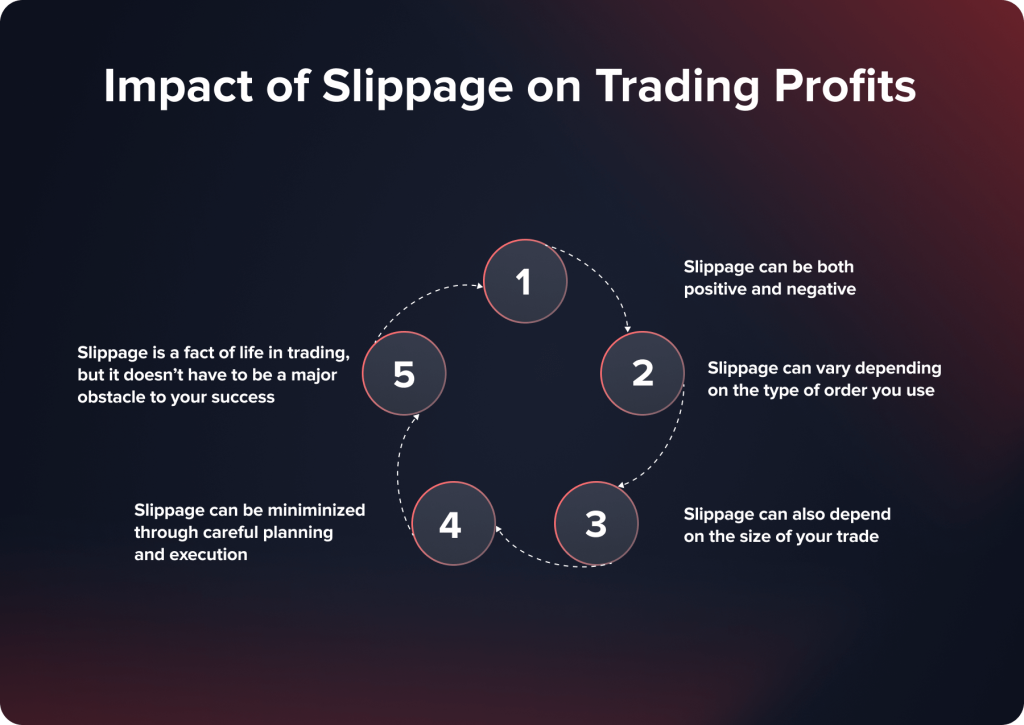
Tác động tiêu cực của sự trượt dốc
Một trong những điều chính mà các nhà giao dịch lo lắng về trượt giá là nó có thể dẫn đến những khoản lỗ mà họ không ngờ tới. Điều này thường xảy ra khi thị trường biến động nhanh chóng, trái ngược với mong muốn của người bán. Ví dụ, nếu giá tăng đáng kể trước khi lệnh của nhà giao dịch được thực hiện, họ có thể phải trả nhiều hơn dự kiến. Đối với các nhà giao dịch cổ phiếu hoặc tiền tệ làm việc trong thị trường biến động, nơi giá trị thường xuyên biến động, điều này đặc biệt khó khăn.
Trượt giá đôi khi có thể khiến các nhà giao dịch chệch hướng khỏi phương pháp giao dịch đã định. Sau khi nghiên cứu kỹ lưỡng và dự báo thị trường, các nhà giao dịch có thể quyết định các điểm vào và thoát lệnh cụ thể. Tuy nhiên, trượt giá có thể làm thay đổi các chiến lược được lên kế hoạch kỹ lưỡng và buộc các nhà giao dịch phải vào lệnh và thoát lệnh ở mức giá thấp hơn mức lý tưởng. Đối với các chiến thuật như scalping, vốn dựa vào việc điều chỉnh giá từng phút để tạo ra lợi nhuận, sự gián đoạn này có thể rất tiêu cực.
Tác động tích cực của sự trượt giá
Mặc dù hầu hết mọi người đều coi trượt giá là một sự kiện tiêu cực, nhưng đôi khi nó có thể mang lại những lợi ích bất ngờ. Trượt giá tích cực là kết quả khi giá thực hiện giao dịch vượt quá giá dự kiến. Nếu thị trường chuyển sang lợi thế cho nhà giao dịch trong khoảng thời gian ngắn giữa lúc đặt lệnh và thực hiện lệnh, lệnh bán có thể được hoàn tất ở mức giá cao hơn. Mặc dù loại sự kiện này không xảy ra thường xuyên, nhưng nó có thể mang lại cho người mua lợi nhuận cao hơn mong đợi.
Trượt giá tích cực thường phụ thuộc vào diễn biến thị trường và loại lệnh đang được sử dụng. Ví dụ, khả năng trượt giá tích cực có thể cao hơn ở những thị trường có nhiều giao dịch và lệnh được khớp nhanh. Điều này đặc biệt đúng nếu nhà giao dịch sử dụng lệnh giới hạn để đặt mức giá thấp nhất mà họ sẵn sàng chấp nhận.
Chiến lược giảm thiểu trượt giá
Giao dịch hiệu quả đòi hỏi sự kiểm soát tỉ mỉ và giảm thiểu tối đa sự trượt giá. Các nhà giao dịch có nhiều chiến lược khác nhau để giảm thiểu tác động tiêu cực của sự trượt giá lên giao dịch của họ.
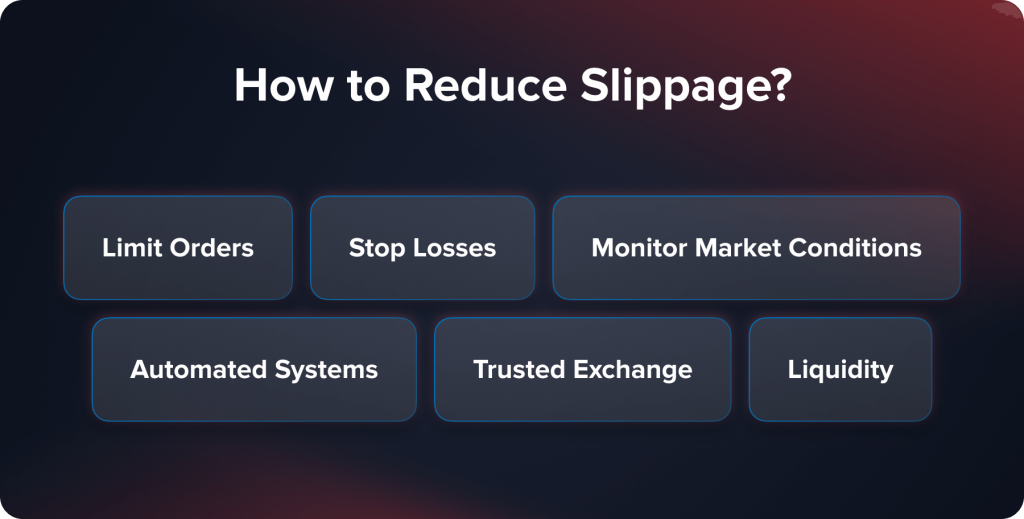
Giao dịch trên thị trường có tính thanh khoản cao
Giao dịch trên các thị trường có tính thanh khoản cao là một cách hiệu quả để giảm thiểu trượt giá. Các thị trường có tính thanh khoản cao thường có số lượng người mua và người bán lớn. Do đó, giao dịch có thể được thực hiện nhanh chóng và khả năng cao là đạt được mức giá mong muốn. Các cặp tiền tệ chính trên thị trường ngoại hối, chẳng hạn như EUR/USD hoặc USD/JPY, thường có khối lượng giao dịch lớn, giúp giảm thiểu khả năng trượt giá đáng kể. Thông thường, các nhà giao dịch cổ phiếu quan tâm đến cổ phiếu blue-chip, vốn có tính thanh khoản cao hơn so với các công ty vốn hóa nhỏ.
Sử dụng lệnh giới hạn
Một cách tiếp cận tuyệt vời khác để giảm thiểu trượt giá là thông qua lệnh giới hạn. Khi sử dụng lệnh giới hạn, người bán có lẽ đang thể hiện mức giá thấp nhất mà họ sẵn sàng chấp nhận khi bán một thứ gì đó hoặc mức giá tối đa mà họ sẵn sàng trả cho bất kỳ thứ gì. Điều này đảm bảo rằng giao dịch chỉ có thể diễn ra ở mức giá mà người bán cảm thấy thoải mái. Điều này giúp bảo vệ bạn khỏi những sai lầm và biến động đột ngột của thị trường. Bạn có thể bỏ lỡ một giao dịch nếu thị trường không chạm đến mức giá bạn đặt, nhưng bạn có thể kiểm soát tốt hơn giá thực hiện giao dịch, điều này khiến nó trở thành một cách hữu ích để xử lý rủi ro trượt giá.
Tránh giao dịch trong thời gian có tin tức quan trọng
Các sự kiện kinh tế và tin tức quan trọng có thể khiến thị trường biến động mạnh và gia tăng thua lỗ. Việc tránh giao dịch vào những thời điểm này giúp các nhà giao dịch giảm thiểu rủi ro thua lỗ. Bằng cách căn thời gian giao dịch xung quanh việc công bố dữ liệu kinh tế quan trọng, thông báo của ngân hàng trung ương hoặc các sự kiện chính trị, các nhà giao dịch có thể tránh được những giai đoạn thị trường có khả năng tăng hoặc giảm mạnh nhất. Để chiến lược này hiệu quả, bạn cần theo dõi lịch tài chính và nắm rõ thời điểm các tin tức như thế này được dự đoán sẽ xảy ra.
Việc áp dụng các chiến thuật này có thể giúp các nhà giao dịch định hướng hoạt động phức tạp của nhiều thị trường khác nhau và giảm thiểu tác động của trượt giá lên giao dịch của họ. Mặc dù khó có thể loại bỏ hoàn toàn trượt giá, nhưng việc học cách giảm tần suất trượt giá có thể mang lại kết quả giao dịch chính xác và dễ dự đoán hơn.
Phần kết luận
Để giao dịch thành công trên các thị trường biến động mạnh như cổ phiếu, ngoại hối và tiền điện tử, bạn cần hiểu rõ và quản lý tốt hiện tượng trượt giá. Bài viết giải thích trượt giá là gì, cách phòng tránh và nguyên nhân. Bài viết cũng nhấn mạnh tầm quan trọng của việc giao dịch trên thị trường mở, sử dụng lệnh giới hạn hoặc lệnh thị trường, và cẩn trọng trước những sự kiện tin tức có thể ảnh hưởng đến thị trường. Với những thông tin này, các nhà giao dịch có thể hiểu rõ hơn về cách thức hoạt động của thị trường tài chính, từ đó tránh được những bất ngờ và cải thiện kế hoạch giao dịch. Cuối cùng, việc hiểu rõ về trượt giá là một bước cần thiết để giao dịch thông minh hơn, hiệu quả hơn và thành công hơn.
Đã cập nhật:
18 tháng 12, 2024



